01 Mar 2013
The others didn’t know Moto and Bridget Kihara had a secret weapon.
The business was relatively new; no-one expected them to be standing on the podium, but when 2012 winner of best residential garden ($75,000 – $150,000) was announced and Kihara Landscape’s name called, this humble husband-wife team had beaten bigger, long-standing landscapers with much larger projects to show.
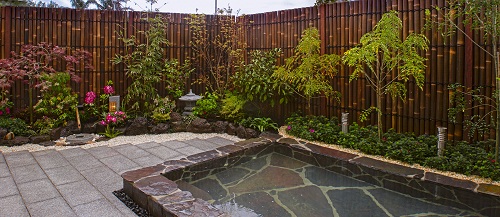
Their secret: a special lineage – three generations of designing and building Japanese gardens.
The judges from Landscaping Victoria had this to say about the award winning Brighton garden.
“This project has been completed to the exacting standards expected of a Japanese garden. Moto has considered all aspects of this garden and constructed it in a very considered and thoughtful way right down to the detail on the gates, the bamboo fencing and the lighting.”
Moto was born and raised in Yokohama, Japan – the son of a landscaper with a family history in designing and creating gardens. Moto came to Queensland, Australia as a teenager to finish high school and complete a TAFE education. On his return to Japan, he obtained his qualifications with his father’s company, Toukaen, and met his Australian born wife-to-be, Bridget. They decided to make Melbourne their home and start a family.
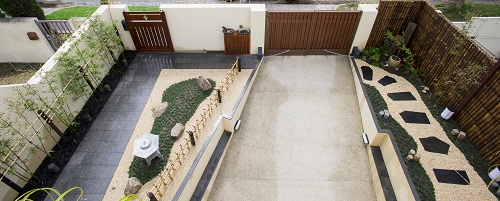
In 2006, husband and wife began Kihara Landscapes; Moto handles the design and construction of each garden while Bridget is in charge of the business side. It took them only six years to win a prestigious industry award. Together, at their latest job (a mainstream garden) they talk about Kihara Landscapes and Japanese gardens.
“It’s not solely Japanese gardens, we do other styles for customers looking for a high level of craftsmanship. Many people like Japanese style, it gets under your skin, but it’s not uncommon for someone looking for a Japanese gardens to have an interest in meditation or Zen. We are usually asked to do smaller spaces – courtyards for instance.”
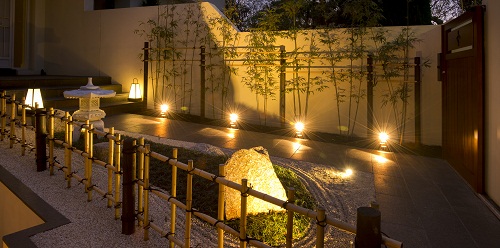
Japanese gardens are well known for their beauty and refinement, and Moto and Bridget admit that they don’t come cheap.
It’s also important to recognize that while a carefully constructed Japanese garden may look low-maintenance, they require constant care to be fully enjoyed. As Moto and Bridget talk about the gardens they have built, and the meticulous effort that goes into each one, the reason for this slowly becomes clear.
Anyone looking for Japanese garden formula can expect to be disappointed. Rather, the art of creating a Japanese garden is found in the painstaking placement of the elements: rocks, plants, trees, ornaments to create an outdoor space of beauty.
“A Japanese garden is to be grasped by all senses … the sound of bamboo, the touch of pebbles … Initially, Moto considers such spatial factors as the orientation to the sun or prevailing wind. He then goes about choosing rocks, plants, to satisfy the aesthetic requirements of the space. “From fifty plants, I may choose one for its shape or colour. Often I shape plants myself,” Moto says.
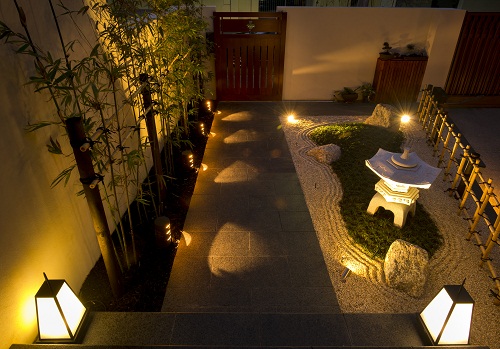
Once the elements are chosen, they seem to take on a life of their own as a vista is created. They are arranged, shaped and shifted as the garden emerges. “They are like characters in a novel – changing as the story goes along,” says Bridget.
A Japanese garden may imitate a scene in nature. A small rock becomes a turtle in a pond. A large rock resembles an island and the carefully manicured rings made in pebbles, ocean waves.
Moto points to a photo of the garden that Kihara Landscapes built for Watsonia library that had received a grant for a community project. There’s an array of colour surrounding a water feature, and Moto describes how the plants around the ornament were carefully placed to take advantage of the moisture so the garden would be in colour all year round.
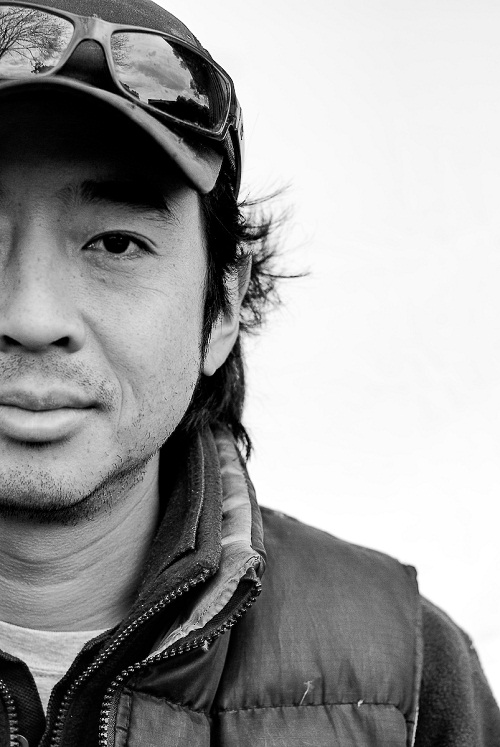
“It’s a sixth sense,” says an obviously proud Bridget. “It’s hard to put into words, but Moto adds a quality that is essentially Japanese to each garden he creates.”
It’s become obvious it takes more than a trip to the local garden supplier for some bamboo and mondo grass to make a Japanese garden, and with no unifying principle anywhere in sight, the art of creating an intrinsically Japanese style garden is hard earned with patience and a good Japanese teacher.
Moto’s father recently celebrated fifty years in business. Both Bridget and Moto agree, this would be a milestone the new generation Kihara Landscapes would love to reach.
Kihara Landscapes
Telephone: 0424 982 876
Article: Peter Dewar
Photos: Kihara Landscapes




